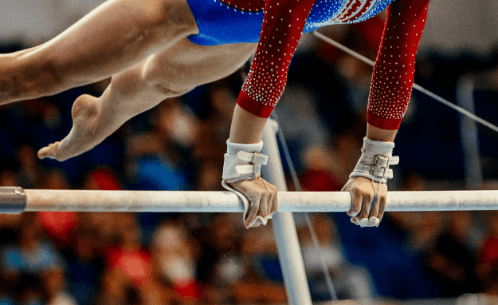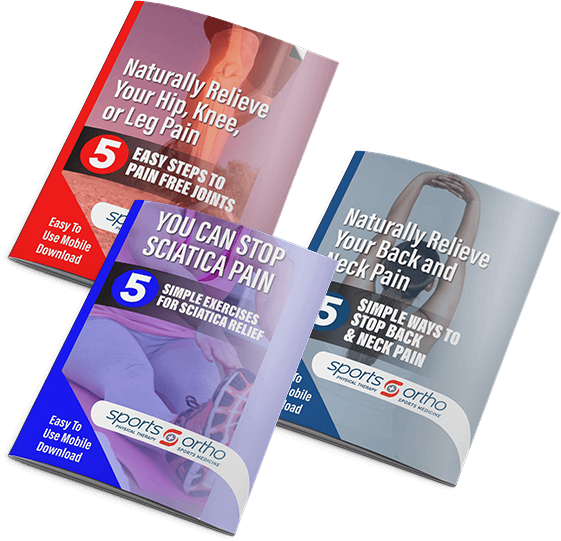Gymnastics Rehab
GYMNASTICS is a highly demanding sport on the body and does not offer much, if any, rest throughout the year between the length of the competitive season and the extent of year-round training. Therefore, it is imperative that any aches and pains a gymnast experiences be treated before they become injuries, and that if injuries do occur, they are treated in a timely fashion so the gymnast can return to his/her normal training regiment as soon as possible. In gymnastics, regression, both physically and mentally, occurs quickly with any loss of training time.
Common Gymnastic Injuries:
- Labral Tears (sometimes called SLAP lesions) in the shoulder may occur from any gymnastic exercise; however rings and bars present the highest risks. A labral tear is characterized by pain in the shoulder that initially resolves but tends to recur with return to sport. The gymnast may complain of the shoulder “popping” with weight bearing on the hands. An MRI can be helpful in establishing a definitive diagnosis.
- Wrist Sprains – In gymnastics, the wrist is subjected to forces that can exceed twice the body weight. The first step in treating wrist pain is to reduce the training volume of the athlete, relieve symptoms, and to participate in only pain-free activities for a period of time. If the gymnast is experiencing pain with non-gymnastic activities of daily living, using a brace or cast to immobilize the wrist temporarily may be helpful.
- Anterior Cruciate Ligament (ACL) Injury – ACL injuries can result when a gymnast lands ?short? or hyperextends the knee while tumbling, dismounting, or vaulting. A ?pop? may be heard or felt, followed by knee swelling within hours. An MRI is often used to confirm an ACL injury. As with other sports, ACL reconstruction and extensive physical therapy is usually recommended for gymnasts who wish to return to full sports participation.
- Osgood Schlatter’s Disease/Syndrome is a rupture of the growth plate at the tibial tuberosity. This condition occurs in active boys and girls ages 11?18, coinciding with periods of growth spurts and is caused by stress on the patellar tendon. Following an adolescent growth spurt, repeated stress from contraction of the quadriceps is transmitted through the patellar tendon to the immature tibial tuberosity at the top of the shin. This can cause multiple avulsion fractures along with inflammation of the tendon, leading to excess bone growth in the tuberosity and producing a visible lump which can be extremely painful when touched. The gymnast may complain of very intense knee pain during activities such as running, jumping, squatting, and especially ascending or descending stairs and during kneeling. The symptoms usually resolve with treatment but may recur for 12?24 months before complete resolution at maturity, when the tibial growth plate fuses.
- Foot and Ankle Injuries – Injuries to the foot and ankle are very common in gymnastics. Acute injuries are usually sprains, which can be minor or more serious. Swelling, bruising and tenderness directly over the bones are signs of a more serious injury. Minor injuries typically have tenderness limited to one side of the joint without significant swelling. Serious injuries require evaluation by a qualified professional while return to participation after a minor injury is often possible in a timely manner if there is no pain (or limping) with weight bearing activity. Protection with a brace can aid recovery and reduce the risk for re-injury. Chronic ankle pain or repeated injuries are worrisome and require evaluation before continuing with participation.
- Achilles Tendon Injury – Gymnasts can suffer from a variety of injuries to the Achilles tendon located just above the back of the heel, as a result of the repetitive stress of jumping and landing. Achilles tendonitis results in calf soreness that is aggravated with jumping and landing. Treatment should initially consist of stretching, activity modification, calf strengthening, and balance exercises. Foot immobilization may be beneficial for severe symptoms.
- Sever’s Disease, or calcaneal apophyisitis, is the most common cause of heel pain in young athletes, especially gymnasts. The gymnast may complain of heel pain with walking and gymnastics, as well as in the morning and if the heel is squeezed. Sever?s Disease is caused by overuse and repetitive microtrauma to the growth plates of the calcaneus, or the heel bone. Sever?s Disease is most common in children between the ages of 10 and 12 years, but can occur between the ages of 7 and 15. Long-term disability is extremely uncommon and the only known cure is for the child is to “outgrow” the condition. In more than 50% of patients, Sever’s disease involves both heels as compared to one. Common treatments physical therapy, orthotics, and limiting impact to the heels.
- Low Back Injuries – The cause of low-back pain can include muscle strain, ligament sprain, fracture, and/or disc disorders. Frequently, low-back pain will worsen with activity, especially with extension movements, such as arching, bridges and back walkovers. Low-back pain in gymnasts related to muscular strain or ligament sprain usually responds to rest and physical therapy exercises. Persistent back pain is uncommon and should not be ignored. An MRI or a bone scan is often helpful to rule out more significant injuries.
- Spondylolysis and Spondylolisthesis – Spondylolysis is a term used for a lateral fracture of the pars interarticularis, a thin segment of vertebral bone. Spondylolisthesis occurs when both sides of the pars interarticularis are fractured and the injured segment of the vertebra moves forward to rub against the next segment. Vertebral fractures stem from excessive stress placed on the spine. Constant low back hyperextension, or arching, performed by gymnasts is the leading causes of these fractures. Immediate medical evaluation is required followed by intensive physical therapy.
- Herniated Discs – Lumbar discs are composed of tough elastic-tissue fibers, which surround a soft gel-like center. Recurring trauma to the back is the prevailing reason for herniated discs in adolescents. The lumbar segments become misaligned, causing the gel-like center, or nucleus pulposus, to bulge outward. This bulging places pressure on the surrounding nerves of the spinal cord, causing debilitating pain. Commonly referred to as slipped vertebral apophysis or slipped disc, it is a condition resulting from lifting heavy weights, or from vigorous training involved in gymnastics.
- Disc Degeneration – The long-term effects of gymnastics can result in disc degeneration, or degenerative disc disease, in which a compromised disc causes low back pain. Lumbar degenerative disc disease usually starts with a torsional, or twisting, injury to the lower back, such as when a person rotates to put something on a shelf or swings a golf club. However, the pain is also frequently caused by simple wear and tear on the spine, especially the wear and tear placed on the spine by gymnastics. Degenerative disc disease can often successfully be managed with physical therapy.
For more information, Contact us at Beverly, Bridgeport, Lincoln Park, Northwest Side Chicago, Glenview, Evanston, & Oak Lawn, IL centers.



